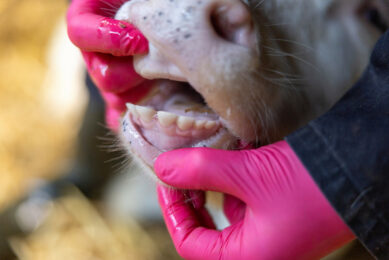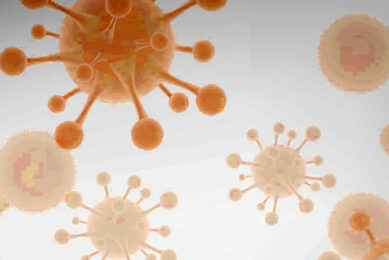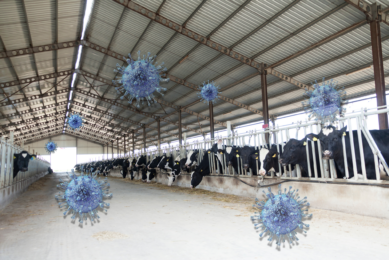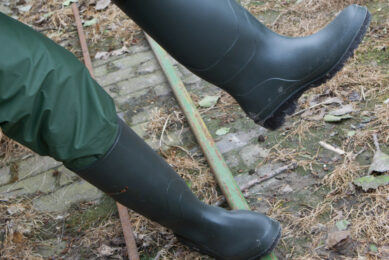Can floor type affect cattle performance?
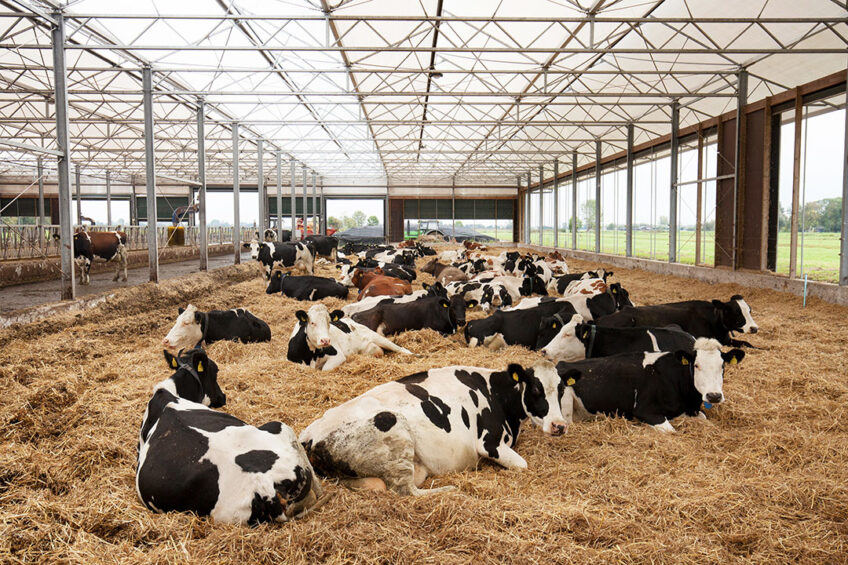
Although much work has been done to investigate the effects of various environmental factors on animal health and performance, seldom was the effect of the house floor taken into account.
In this article, we review some flooring systems used for cattle kept indoors and the advantage of each system in terms of animal health, behaviour and performance compared to the traditional concrete floors.
Ordinary concrete floors
Poor concrete surfaces cause a high incidence of lameness, sole ulcer, and white line disease. Much of these problems may, however, be alleviated with the fine line between a concrete floor surface that is too rough and causes injury due to abrasion and one that is too smooth and causes injury because of inadequate footing. The other factors contributing to these problems such as genetics, nutrition, and environment should in the meantime be duly considered.
Grooved concrete
2 theories exist regarding the grooved concrete:
- The first is to provide grooves with spaces such that they provide an edge to catch a cow’s hoof soon after slippage initiates. For example, grooves can be spaced from 10 to 20 cm apart with a depth of 1.25cm when diagonal structures are used. If a diamond pattern is desired, it can be constructed using the same groove dimensions with the spacing adjusted to 15cm on centre.
- The other theory is to space grooves closer together so that at least one of the 4 primary hoof contact surfaces lands in a groove when a foot is put down to preclude initial slip. Orientating grooves perpendicular to the length of an alley will maximise the effectiveness for cows but may compromise manure removal. In order to mesh the theoretical results with practicality, it was recommended to install 1cm wide by 1cm deep grooves parallel to the direction of scraper travel and to have the grooves spaced 5 to 7.5 cm on centre.
The rubber coating on the floor
In a study conducted at the University of Hohenheim in Germany, it was found that covering the floors of the barns with sheets of soft rubber that mimics the soil of the pastures helps to achieve the following advantages compared to solid concrete floors:
- The animal tends to stagnate and relax on the soft floor for up to 14 hours a day, and this will improve blood circulation in the udder and hence increase milk production.
- Soft ground helps to increase the efficiency of oestrus detection by increasing the mounting rates.
- The soft ground acts as a shock absorber and thus maintains the integrity of the animal’s hooves.
- It was found that the provision of soft floors allows the unrestricted movement of the animal inside the barn. The distance travelled by the animal in one step reaches in this case 78cm while the distance is reduced to just 58cm in the case of hard concrete floors. Such unrestricted movement helps improve blood circulation in the living tissue of the animal’s hooves, thus providing more protection for the hooves and increasing the ability of the outer edges to carry the bulk of the animal’s weight (60%) while walking.
Also read: Give the cows some rest
Sand bedding
When using sand as a bedding material, 2 points should be considered:
- The sand bed should be 20-30cm deep in order to enable confident footing and prevent the abrasive effect of sand when used in a thin layer and
- The sand particle size should not be greater than about 3mm in most situations so that a cow can safely walk on it.
With sand bedding, animals tend to rest for more than 12 hours per day. In terms of animal health, the sand provides superior cushioning for knees and hocks with 42% less lameness and 75% fewer hock abrasions compared with other bedding material such as the sawdust. Further, bacterial counts in inorganic bedding such as sand are typically lower than those in organic bedding material. In one study, the prevalence of E. coli was 1.4% in sand bedding compared to 3.1% in an organic material such as sawdust. Economically, the sand is relatively cheap and readily available compared to many other bedding materials, especially when used in areas near beaches and rivers.
Also read: Lameness management when using AMS
Straw bedding
Bedding with crop residues such as wheat straw may provide substantial benefits during periods of the year when cold stress can cause increased maintenance requirements and decreased performance (Table 1).
The straw material also acts as a sponge and retains a large amount of urine which is the main source of ammonia, thereby reducing health problems and pollution of the environment. Economically, an additional value is captured from the extra nutrients in the manure which is used for fertiliser, either in the raw or composted state. If the cost of N is $ 0.66/kg and the use of bedding can retain extra 3.2kg of N per ton of fresh manure then a producer can realise about $ 2.10 more N fertiliser value per ton of manure. These estimates were made around 13 years ago but may follow the same trends when adjusted to the current price situation.
Conclusions
Several flooring systems have been developed for supporting animal comfort, health, and production and facilitating animal management indoors. Each of these systems has its own advantages but may be disadvantageous if improperly used or selected. The choice of any of these systems depends largely on the cost, climatic condition, availability of the floor material to be used, and its capacity to meet specific health and production targets. It also depends on the production level of cattle and whether they are economically responsive so as to justify the costs invested in each floor system.
References are available from the author upon request (drsalah31@hotmail.com).
Join 13,000+ subscribers
Subscribe to our newsletter to stay updated about all the need-to-know content in the dairy sector, two times a week.



